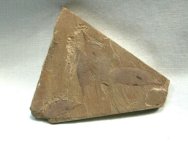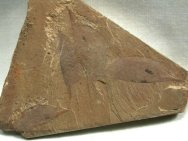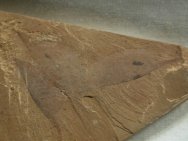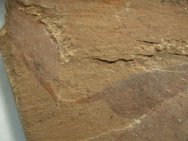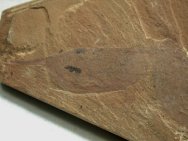Isoxys
auritus
Phylum Arthropoda
Geologic
Time: Early Cambrian (~525 million years ago)
Size (25.4mm=1
inch): 24-31 mm long by 7- 11 mm tall on a 60 mm by 68 mm matrix
Fossil
Site: Chengjiang Maotianshan Shales, Quiongzhusi Section, Yu’anshan
Member, Heilinpu Formation, Mafang Village, Anning, Kunming, Yunnan Province,
China
| 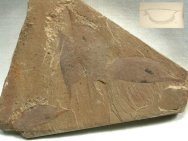 Description:
This unusual arthropod is known as Isoxys auritus. The species is
known mostly from the distinctively–pointed bivalved carapace.
The diversity of soft-tissue fossils is astonishing: algae, medusiforms,
sponges, priapulids, annelid-like worms, echinoderms, arthropods
(including trilobites), hemichordates, chordates, and the first
agnathan fish make up just a small fraction of the total. Numerous
problematic forms are known as well, some of which may have represented
failed attempts at diversity that did not persist to the present
day. Description:
This unusual arthropod is known as Isoxys auritus. The species is
known mostly from the distinctively–pointed bivalved carapace.
The diversity of soft-tissue fossils is astonishing: algae, medusiforms,
sponges, priapulids, annelid-like worms, echinoderms, arthropods
(including trilobites), hemichordates, chordates, and the first
agnathan fish make up just a small fraction of the total. Numerous
problematic forms are known as well, some of which may have represented
failed attempts at diversity that did not persist to the present
day. 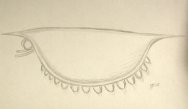
The
taxon is only rarely preserved with any soft parts evident. Based
upon the few known examples, it had a long segmented body, forwardly-projecting
stalked eyes, and short antennae. The swimming appendages and most
other soft parts only protruded slightly from their protective shell.This
taxon is known only from the Chengjiang Biota, but other members
of the genus are found in deposits in Europe, Australia, and North
America. With FOUR nearly perfect shells, this is the ONLY multiple
example I have yet been able to secure
|
|


